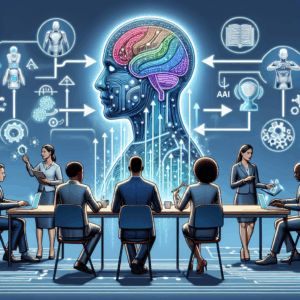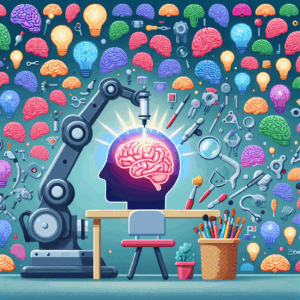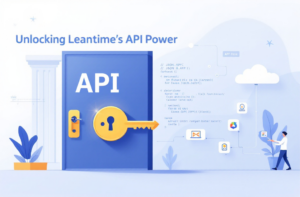TL;DR: Your brain is a custom Linux distro trying to run Windows software. Understanding this helps you optimize your mental infrastructure for better performance and longevity.
Introduction: Your Brain as a Custom Linux Distro
Hey fellow sysadmins, devs, and Linux enthusiasts. If you’ve ever felt like you’re running a totally different OS from everyone else at work, you’re not alone. Let’s map neurodivergence to something we all understand: systems architecture and virtualization.
The Core Operating System
Your brain is your base OS. For neurodivergent folks (ADHD, autism spectrum, etc.), this isn’t just a different flavor of the mainstream distribution – it’s a fundamentally different architecture.
# Neurotypical brain (mainstream distro)
cat /proc/neurotype
> Windows-like: standard configurations, broad compatibility
# Neurodivergent brain (custom distro)
cat /proc/neurotype
> Linux-like: optimized for specific use cases, requires custom driversRole Virtualization: When Compatibility Becomes Complex
Every role you play “developer, manager, team member” is like running an application designed primarily for the neurotypical OS. Let’s break down the architecture:
The VM Approach: Full Role Emulation
- Resource Intensive: Like running a Windows VM on Linux
- Full Isolation: Complete separation between your “work self” and core personality
- Performance Hit: High memory and CPU usage
- System Stability: Risk of “crashes” (burnout)
# When you're masking heavily
top -p neurotype
> Memory: 95% used (constant context switching)
> CPU: spiking (executive function overload)
> Swap: active (compensatory strategies engaged)The Container Approach: Lightweight Role Adaptation
Containers (Docker) offer a more efficient model:
- Shared Kernel: Base personality remains core
- Isolated Environment: Role-specific behaviors
- Lower Overhead: Less mental energy expenditure
- Better Resource Management: Can run multiple roles efficiently
# A role container for neurodivergent brains
FROM base/neurodivergent-brain:latest
# Environment variables for this role
ENV SOCIAL_PROCESSING=verbose
ENV EXECUTIVE_FUNCTION=scheduled
ENV SENSORY_INPUT=filtered
# Install necessary adaptations
RUN apt-get install -y \
noise-canceling-headphones \
fidget-tools \
routine-scheduler
# Set working directory
WORKDIR /roles/technical-lead
# Default command with sensory considerations
CMD ["run_role", "--with-breaks", "--stim-friendly"]Compatibility Layers and Necessary Compromises
Running in Production: When You Can’t Modify the Environment
Sometimes you’re forced to run incompatible software:
# When workplace doesn't support neurodivergent needs
./run_role --compatibility-mode --force
Warning: Running with reduced performance
Warning: Resource exhaustion likely
Warning: System instability possibleThis is like using Wine to run Windows apps on Linux. It works, but:
- Performance degrades
- Resource usage skyrockets
- Stability becomes questionable
The WSL Problem: Windows Subsystem for Linux
Masking often operates like WSL:
- Your Linux core runs within a Windows-like shell
- Visible to the outside world as “Windows”
- Internal processes remain Linux
- Performance impact from translation layers
- Limited access to native capabilities
Debugging Compatibility Issues
Common Error Messages in Neurodivergent Systems:
# Executive function module
ERROR: Task initiation failed - ADHD kernel limit exceeded
WARN: Context switching buffer overflow
INFO: Hyperfocus mode activated unexpectedly
# Sensory processing warnings
WARN: Audio input exceeds comfortable threshold
ERROR: Visual stimuli buffer overflow in open-plan office
INFO: Proprioceptive feedback loop established (stimming)
# Social protocol errors
ERROR: Nonverbal communication failed to parse
WARN: Small talk protocol not supported
INFO: Falling back to technical discussion modePerformance Monitoring for Role Health
Monitor your system load through real human indicators:
# Check current role load
neurotype-stats --current-role
> Role: Technical Team Lead
> Mask Level: 75%
> Resource Usage: CRITICAL
> Status: Schedule immediate downtime
# System health check
selfcheck --comprehensive
> Executive function: DEPLETED
> Social battery: 15% remaining
> Sensory processing: OVERLOADED
> Recommendation: Safe space and special interest time requiredArchitecture Patterns for Better Compatibility
1. Microservices for Roles
Instead of monolithic masking, break roles into smaller services:
- Technical communication service
- Meeting presence service
- Email response handler
- Conflict resolution module
Each can scale independently based on your current system resources.
2. Event-Driven Architecture for Special Interests
When a special interest event occurs:
specialInterest.on('activated', () => {
systemPerformance.boost()
focusLevel.maximize()
timePerception.suspend()
})3. Orchestration Tools
Use container orchestration for your role management:
# docker-compose.yml for daily role management
version: '3'
services:
morning-routine:
image: neurodivergent/morning-ritual:latest
depends_on:
- caffeine-service
- sensory-prep
work-developer:
image: roles/dev-focused:latest
environment:
- NOISE_CANCELLATION=true
- VISUAL_NOTIFICATIONS=false
volumes:
- special-interests:/home/user/projects
social-interaction:
image: roles/masked-social:latest
cpus: 0.5 # Limited resources
mem_limit: 1g
restart: only-when-necessaryCI/CD for Personal Growth
# .role-config.yml
deployment:
strategy: progressive-unmasking
stages:
- build-awareness
- test-in-safe-environments
- deploy-partial-authenticity
- monitor-feedback-loops
- rollback-if-unsafe
metrics:
- energy-expenditure
- social-acceptance
- personal-satisfaction
- long-term-sustainabilityCreating Accessible Environments
As tech leaders, we can patch our work environments:
# Environment customization PR
git checkout -b neurodivergent-friendly-office
# Add support for different operating systems
echo "quiet-room: True" >> office-config.yml
echo "flexible-hours: True" >> policy.md
echo "fidget-friendly: True" >> meeting-guidelines.md
# Commit changes
git commit -m "feat: Add support for neurodivergent OS variants"Error Handling and System Resilience
Build in failure modes for your role system:
class RoleManager:
def __init__(self):
self.health_monitor = HealthMonitor()
self.role_stack = []
def run_role(self, role):
try:
if self.health_monitor.check_capacity():
self.role_stack.append(role)
role.execute()
else:
raise ResourceExhaustionError()
except ExecutiveFunctionError:
role.degrade_gracefully()
except SensoryOverloadError:
self.initiate_shutdown_sequence()
def initiate_shutdown_sequence(self):
# Safe mode: minimal role requirements
self.role_stack = [BasicFunctioning()]
self.notify_support_systems()Conclusion: Optimizing Your Tech Stack for Your Brain
Understanding your mental architecture through tech metaphors isn’t just clever – it’s essential for building sustainable systems. Whether you’re managing servers, writing code, or navigating office politics, remember:
- Your OS is different, not broken
- Compatibility layers drain resources
- Native execution performs better
- System health requires monitoring
- Regular maintenance prevents crashes
The tech world needs neurodivergent perspectives. We see systems differently, solve problems uniquely, and innovate persistently. By understanding our own architecture, we can build environments where our kernels run at optimal performance.
# Final system check
uname -a
> Neurodivergent Brain 1.0.0 #ADHD-ASD hybrid
> Built with: curiosity, pattern-recognition, and
> occasional executive function challenges
>
> System ready for deployment.
> Warning: May hyperfocus on special interests.
> This is a feature, not a bug.Remember: The best system is one that runs stable, not one that runs standard.
References
- The Cathedral and the Bazaar – Eric S. Raymond (mental models in system development)
- Container Technologies and Brain Function (Metaphorical literature)
- Masking as Compatibility Layer (Accessibility documentation)
This article was written in vim, compiled with coffee, and debugged with stimming.






